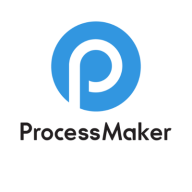

Appian and ProcessMaker are leading BPM tools in automation and process management. Appian seems to have the upper hand for larger enterprises, while ProcessMaker is advantageous for smaller businesses seeking flexibility.
Features: Appian offers advanced process automation, robust integration capabilities, and high scalability, ideal for complex enterprise needs. ProcessMaker provides user-friendly process modeling, ease of customization, and is recognized for its open-source options, making it valuable for cost-effective management solutions.
Ease of Deployment and Customer Service: Appian's cloud-based deployment and dedicated support teams benefit large-scale projects with rapid scalability. ProcessMaker features a straightforward deployment and personalized support, perfect for smaller organizations needing agile service. Appian's support infrastructure contrasts with ProcessMaker's agile deployment.
Pricing and ROI: Appian generally requires a higher initial investment, leading to a substantial ROI due to extensive integration and scalability. ProcessMaker offers a lower setup cost and quicker ROI, appealing to businesses prioritizing cost-effectiveness and customization. Appian's higher costs contrast with ProcessMaker's economical solutions.
| Product | Market Share (%) |
|---|---|
| Appian | 4.7% |
| ProcessMaker | 0.9% |
| Other | 94.4% |


| Company Size | Count |
|---|---|
| Small Business | 20 |
| Midsize Enterprise | 9 |
| Large Enterprise | 41 |
Appian is a unified low-code platform and solution used by businesses to build enterprise applications and workflows. This product adapts to the needs of clients and the technologies they are already using to combine their data in a single workflow and maximize resources. The platform has four main components through which it transforms the work process for companies of various sizes. They are:
Appian is utilized across a diverse set of industries, including automotive and manufacturing, energy and utilities, education, financial services, telecom and media, transportation, retail, insurance, healthcare, and life sciences. The most frequent use cases of Appian are customer journey, governance, risk and compliance, operational efficiency, supply chain, distributed order management, and environmental, social, and governance (ESG) management.
Appian Features
Appian has various features that allow users to create solutions for their businesses. These features can be separated into a few groups according to function, including automation, low-code application development, and integrations and data. Some of the most frequently used features of Appian include:
Appian Benefits
The benefits of using Appian include:
Reviews from Real Users
A practice leader - digital process automation at a computer software company values Appian highly because the product is easy to develop, low-code, and has a good user interface.
Alan G., an advisory board member at Codecon VR, Appian offers a clear application life cycle, easy to learn documentation, and comes with a fundamentals course.
ProcessMaker is an American multinational corporation headquartered in Raleigh-Durham, North Carolina. The company specializes primarily in developing and marketing enterprise business process management (BPM) software. The company also provides customer support, training, and professional services to larger enterprise customers that require highly customized solutions. The company’s flagship Low-Code BPM product is known for its ease of use and ability for deep customization.
We monitor all Business Process Management (BPM) reviews to prevent fraudulent reviews and keep review quality high. We do not post reviews by company employees or direct competitors. We validate each review for authenticity via cross-reference with LinkedIn, and personal follow-up with the reviewer when necessary.